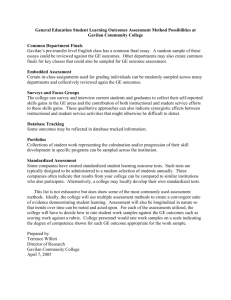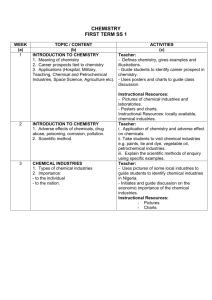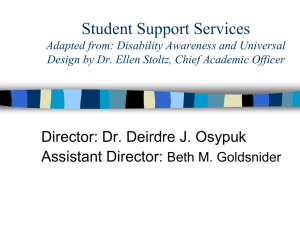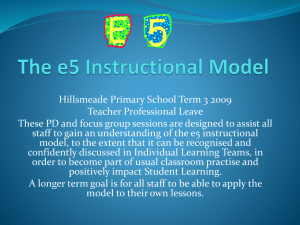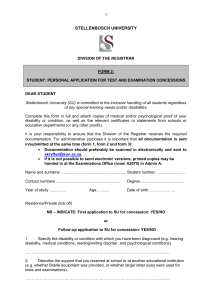PPT - Arizona APCO / NENA
advertisement
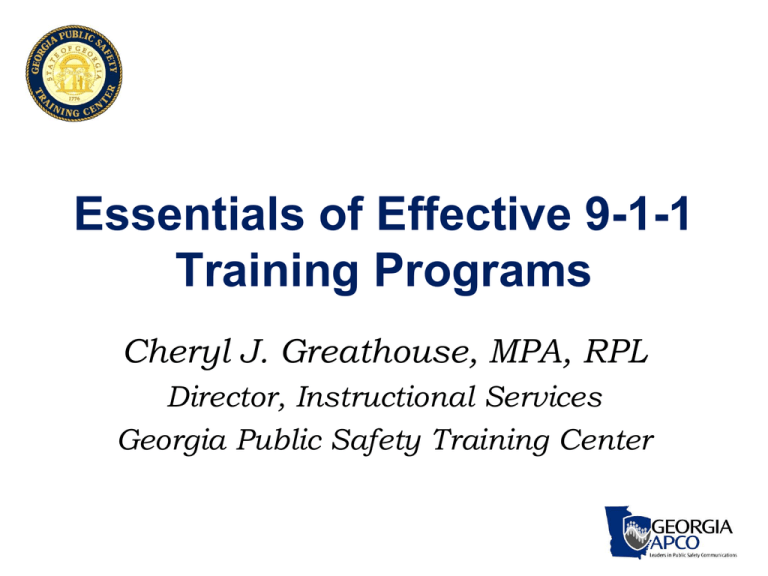
Essentials of Effective 9-1-1 Training Programs Cheryl J. Greathouse, MPA, RPL Director, Instructional Services Georgia Public Safety Training Center Enabling Objectives • Discuss the reasons for providing training and its impact on 9-1-1 operations. • Discuss the phases of the development process known as ADDIE. • Discuss how to build and maintain a comprehensive training plan in addition to individual training records. • Discuss the importance of written examinations and skills assessment performance examinations. Purpose of 9-1-1 Training • Orient new employees • Develop basic job skill sets • Develop advanced job skill sets • Remediate problematic areas of skill sets • Transition to a new job category Purpose of 9-1-1 Training • Present new information • Meet legal mandates for training • Motivate employees • Change behavior What is the impact of improper training or failure to train in 9-1-1? Negative Impacts • • • • • • • Danger/loss of life for responders Danger/loss of life/property for citizens Criminal penalties Civil lawsuits for negligence Loss of confidence by responders/public Low morale Staff turnover Benefits of Effective Training • Better prepared call takers/dispatchers • Better prepared supervisors, trainers, technicians • Improved services to responders/public • Reduction of criminal and civil actions • Improved morale/team work • Staff retention Elements of Effective 9-1-1 Training Programs • Highly qualified and trained personnel who serve as trainers (coordinators, classroom instructors, CTOs) • Well documented and based on valid training needs assessment • Based on industry standards, if applicable • Based on contemporary instructional development principles Elements of Effective 9-1-1 Training Programs • Focused on learner-centered instruction designed to develop of critical thinking skills • Standardized lesson plans • Versioning system • Individual training records • Tools to track trainee progress Elements of Effective 9-1-1 Training Programs • Test instruments must be valid and reliable • Test items must relate to specific learning objectives • Performance-based with specific criteria and standardized evaluation methods What does A.D.D.I.E. mean? A.D.D.I.E. Model Analysis • A mandate • An organizational problem • A new initiative • Training Needs Assessment • Job Task Analysis • Occupational Analysis • Surveys • Job Descriptions Design • What is specific training need? • What are you trying to accomplish? • To what degree of learning are we trying to reach? • Who is our audience? • Is it cognitive and/or psychomotor based? • What is our measure of success/failure? Design • • • • • • Establish training goal Develop terminal performance objective Develop enabling objectives Determine testing methodologies Determine instructional methodologies Determine course development resources Development • Describe performance expectations as a result of training • Focus on learner-centered objectives • Base content on these objectives • Develop training materials • Develop testing materials Implementation • • • • Delivery of the training Effective instructional techniques Learner-centered activities Involve hands-on demonstrations and performance activities • Focus on scenario or problem-based training Evaluation • Formal written and/or performance exams covering content • Under the same or simulated job conditions • Grading rubric or standardized evaluation criteria • Trained evaluators • Established cut score for pass/fail • Remediate & re-evaluate A.D.D.I.E. Model Training Documentation Class Course • Student • Student Class Class • Student • Student • Student • Student Training Courses • • • • • • • • Narrative Lesson Plans & Handouts Data Slides & Other Audio/Visual Aids Practical Exercises Course Schedule Written Examination Plan Performance Examination Plan Course Evaluation Plan Approval(s) for content Training Classes • • • • • • • • Course Topic/Description Dates of Class Delivery Instructor(s) name Course content and performance objectives Testing (scores, types) Remedial training, if provided Training schedules Student names (attendance sheets/rosters) Student Records • • • • • • Individual employee records Courses completed Scores/completion status Documentation of performance Documentation of remedial training Career long record Written Examinations • Well written test items • Related to specific training objectives • Clearly written test taking instructions – Answer sheet – Time limit – % score to pass • Maintained in a secure file • Test scores (item analysis) Performance Examinations • Directly related to training objectives • Under the same or simulated job conditions • Grading rubric or standardized evaluation criteria • Trained evaluators • Established cut score for pass/fail Thank You! Cheryl J. Greathouse, MPA, RPL Director, Instructional Services Georgia Public Safety Training Center 478-993-4637 cgreathouse@gpstc.org


